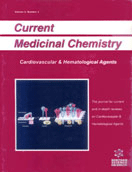Abstract
Extensive atherosclerosis and heavy vascular and valvular calcifications are common complications of end stage renal disease (ESRD) and are very likely related to the high incidence of cardiovascular disease in these patients. The greatly increased incidence of cardiovascular disease is only partly explained by traditional risk factors for atherosclerosis. In ESRD, vascular calcification occurs both in the vascular intima layer and in the tunica media. Intimal calcification is disseminated and is characteristically associated with damaged and abnormally functioning endothelium, and macrophage and vascular smooth muscle cell (VSMC) infiltration typical of atherosclerosis. On the contrary, medial calcification occurs in patchy distribution and the most frequent cell types found in its vicinity are the VSMC and macrophage. The uremic state is associated with numerous metabolic abnormalities and endocrine disturbances primarily involving calcium and phosphorus metabolism. Furthermore, chronic kidney disease and dialysis are considered states of active and strong inflammatory response. These dysfunctions occur early in the course of renal failure and likely contribute to the development and progression of vascular calcification and atherosclerosis. For many years, vascular calcification was considered solely the result of a passive deposition of hydroxyapatite crystals in the arterial wall due to elevated calcium-phosphate ion product. However, a large body of evidence has now shown that this is a highly regulated process governed by factors that closely resemble calcium deposition in bone tissue. In fact, vascular calcification requires changes in the phenotype of VSMC and the expression of several proteins normally involved in bone metabolism. This review is centered on the etiopathogenesis of vascular calcification in ESRD, its detection with modern imaging modalities and the therapeutic approaches currently available to slow its progression.
Keywords: chronic kidney disease, vascular calcification, computed tomography, sevelamer, calcium salts
 3
3













